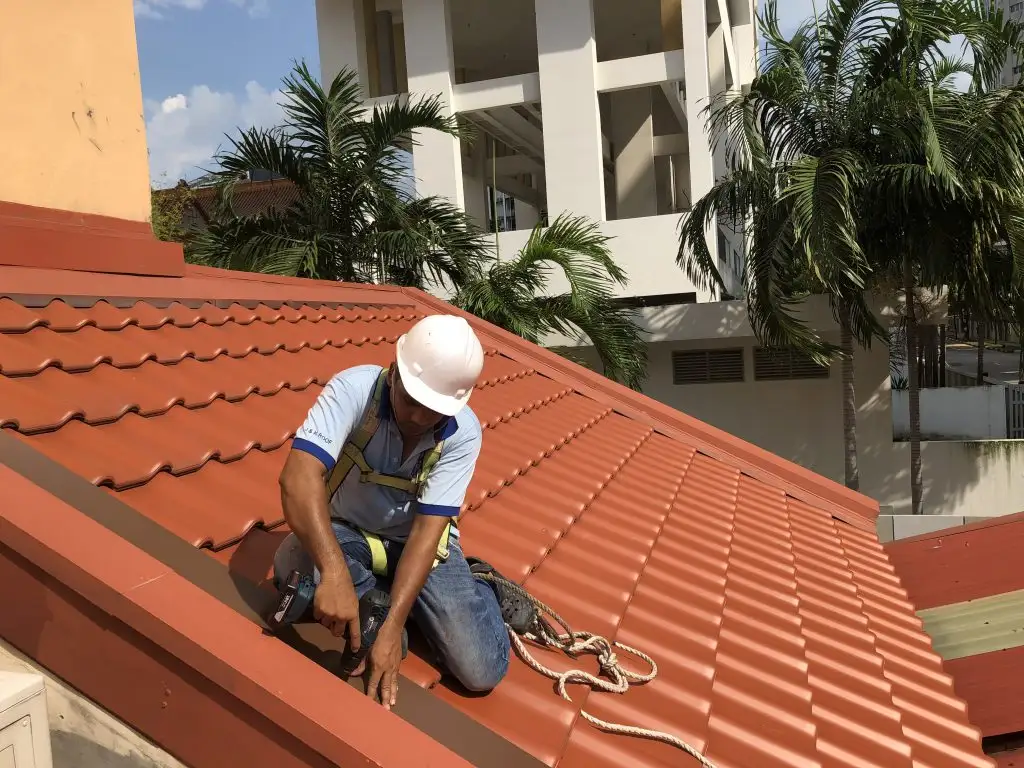Is Your Roof Leaking? Here Is What You Should Do

A leaking roof can be an unexpected nightmare that can turn into a frenzy if you are not prepared. Roof leaks, unfortunately, do happen often, and most of the time, people are neither ready, nor they do know how to contain the situation. The roofs over time can get exposed to different elements resulting in leakage. A leak stemming from your ceiling can create havoc in no time unless it is detected and repaired quickly. Not only are you prone to the water damage caused by the leak but it can also lead to mold growth and water intrusion inside your home if left as it is.
If your roof is leaking, then don’t worry we have got it covered for you. You are not alone, and some people have gone what you are going through right now. There are some steps that you need to take before you call in professional help to reduce the damage.
Given below is a helpful guide for people who are dealing with roof leaks to control and mitigate the situation.
Minimize the damage indoors: The first and foremost thing to do is to control the damage inside from the seeping water, which keeps dripping from the roof. You can do that by placing buckets or large containers to prevent it from ruining your flooring or carpet. A good idea would also be to move any furniture, electronics or any valuable items which can be damaged by the seeping water to a dry and safe area.
In case you are unable to move the furniture, you can use plastic sheets. Also, sometimes if there is a consistent water leakage happening, it may cause the paint on the walls or the ceiling to bubble up or become a blister, as some water is confined in such bubbles. In such cases, use a pin to puncture a hole in these bubbles and release the water in that area. You might have to repaint your wall or ceiling after that.
Locate the Leak Outside: Tracing the leak back to its source can sometimes be tricky. You might have to check your attic and trace the water path and pipe relining to find the source of the leak. However, trying to do this during the rain will do you no good, you might have to wait for the sun to show up before you decide to find the actual source of the leak. You can look for clues such as discoloration on the wood because of the moisture, watermarks, stains, blisters on the wall to trace the water path back to its actual source. However, one should always keep in mind that the leak on your roof would not always match the one you have on your ceiling, as even a small hole on your roof (depending on the slope of your roof) might cause a large quantity of water to seep through wood. Also, it is essential to note that since water travels, a leak from the roof to the nearest joint may trickle down from trusses or beams until it finds a soft-landing spot in the attic which may leak into the ceiling.
Try to contain the situation: It is one of the most critical steps, and if you follow this step carefully, you may avoid any further damage caused by the leak and may even end up saving some money in the long run. If you find the source of your leak possibly through a crack, a hole on the roof or even some missing shingles, then you may likely need the help of professionals. After you called in for their support, you can’t just sit down and wait for them to arrive, instead what you need to do is to contain the situation.
It is a good idea to stop the water flow before it causes any permanent damage to the walls or the ceiling. It may even sound counter-intuitive, but to prevent water from spreading through the walls, you can use a screwdriver or some sharp tool to puncture a hole deep in the wall so that you can create a natural outlet for it escape and stop it from pooling in which as a result would have caused extensive damage to your home
Try some Repairs: After containing the situation, you can try some repairs before the experts arrive. Although these solutions are not long-term, they can work out and save your home while you wait for the professional to check-in. The easiest thing to do is to put in a roofing tape on cement from the inside after you have located the leak. It would stop the water penetration and its flow, which is coming in from the roof.
Another more accessible and more effective way is to use the tarp. It can be a bit dangerous since you have to take the tarp up on the roof with you, and you have to cover it on the leak, which prevents the water from coming in. It is a more effective solution than using a roofing tape or cement to cover the opening since it stops the water from seeping in at all, but it is undeniably quite dangerous as well, and unless you are mentally well prepared and comfortable, it is advisable not to pursue this. Also, no matter how bad the leak is, do not climb your roof without any safety equipment or during the rain.
And if you are uncomfortable or not able to perform these repairs, wait for the professionals to arrive in
Conclusion: A roof leak is nothing extraordinary; sooner or later, everyone gets to experience it. Seek the help of professionals if you are unable or cannot perform these above tasks, also once a year have your roof inspected and check to prevent any future leaks. The quicker diagnose the problem, the easier will you be able to fix it.





